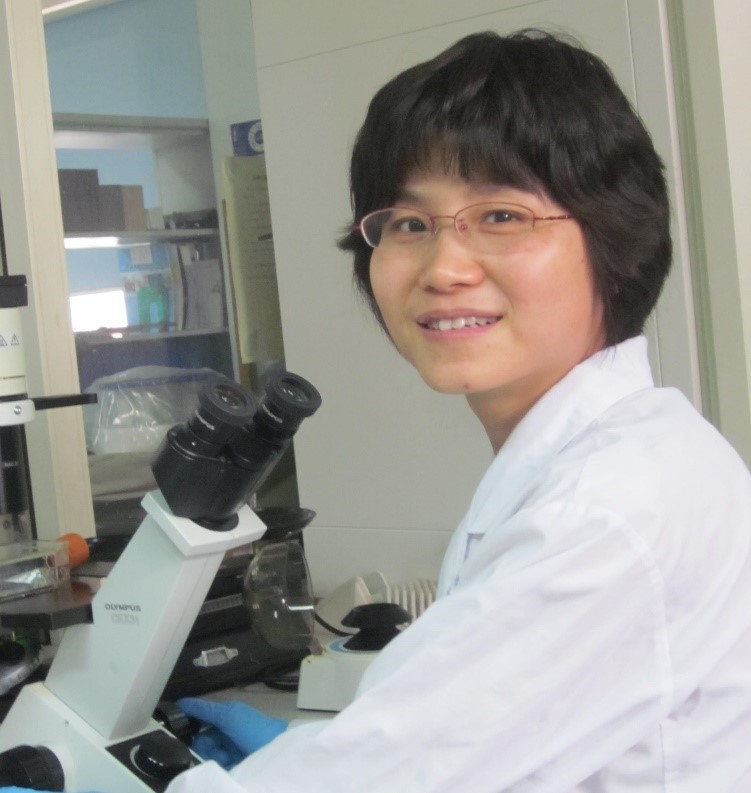张君查看源代码讨论查看历史
 |
张君,女,北京大学基础医学院教授。
人物履历
2001年7月获北京大学医学部免疫学博士学位,2001年-2004年在美国犹太医学中心免疫学系做博士后研究工作,2004年5月起至今在北京大学医学部任教,历任副教授,教授。
研究方向
基金项目
包括科技部“863”课题1项,国家自然科学基金5项,北京市自然科学基金1项,教育部留学回国启动基金1项;以课题骨干(北医负责人身份)参与“973”课题2项;2013年入选教育部新世纪优秀人才。
获奖情况
北京大学医学部优秀教师,北京大学医学部教学优秀奖,以及基础医学院优秀SCI论文奖,基础医学院优秀SCI论文引用奖,基础医学院创新人才优秀指导教师等;2014年入选北京大学优秀青年人才奖励计划。
学术成果
论文
1. Cai J, Chen HY, Peng SJ, Meng JL, Wang Y, Zhou Y, Qian XP, Sun XY, Pang XW, Zhang Y, Zhang J*. USP7-TRIM27 axis negatively modulates antiviral type I IFN signaling. FASEB J. 2018, 32(10):5238-5249.
2. Wang K, Zhang X, Wang Y, Jin G, Li M, Zhang S, Hao J, Jin R, Huang X, Wu H, Zhang J*, Chen Y*, Ge Q*. PDCD5 regulates iNKT cell terminal maturation and iNKT1 fate decision.Cell Mol Immunol. 2018 Jun 19. doi: 10.1038/s41423-018-0059-2.
3. Lin C, Zhang J*. Reformation in chimeric antigen receptor based cancer immunotherapy: Redirecting natural killer cell. Biochim Biophys Acta Rev Cancer, 2018,1869(2):200-215. (review)
4. Lin C, Zhang J*. Inflammasomes in Inflammation-Induced Cancer. Front Immunol.2017;8:271. (review)
5. Pan Y, Li R, Meng JL, Mao HT, Zhang Y, Zhang J*.Smurf2 negatively modulates RIG-I-dependent anti-viral response by targeting VISA/MAVS for ubiquitination and degradation.J Immunol, 2014,192 (10):4758-64.
6. Lu D, Dong D,Zhou Y, Lu M, Pang XW, Li Y, Tian XJ, Zhang Y*, Zhang J*.The tumor suppressive function of UNC5D and its repressed expression in renal cell carcinoma. Clinical Cancer Research, 2013,19(11):2883-92.
7. Li R, Pan Y, Shi DD, Zhang Y, Zhang J*.PIAS1 negatively modulates virus triggered type I IFN signaling by blocking the DNA binding activity of IRF3. Antiviral Research, 2013,100(2):546-54.
8. Lv D, Zhao W,Dong D, Qiao XP, Zhang Y, Tian XJ*, Zhang J*. 2011.Genetic and epigenetic control of UNC5C expression in human renal cell carcinoma.Eur J Cancer,2011,47(13):2068-76
9. Li GD, Zhang X, Li R, Wang YD,Wang YL, Han KJ, Qian XP,Yang CG, Liu P, Wei Q ,Chen WF , Zhang J*,and Zhang Y*. 2008. CHP2 activates the calcineurin/NFAT signaling pathway and enhances the oncogenic potential of HEK293 cells.J Biol. Chem., 2008,283(47):32660- 32668.[1]